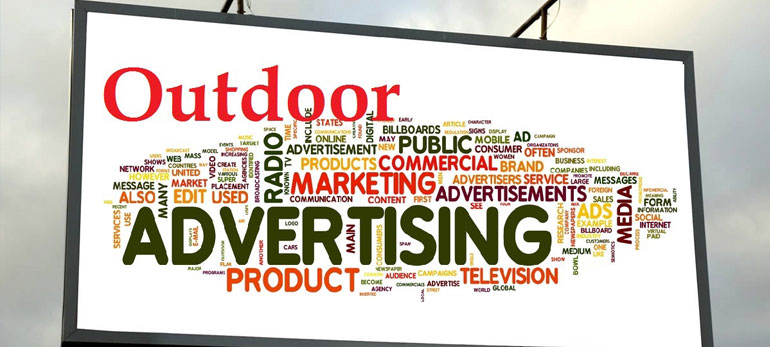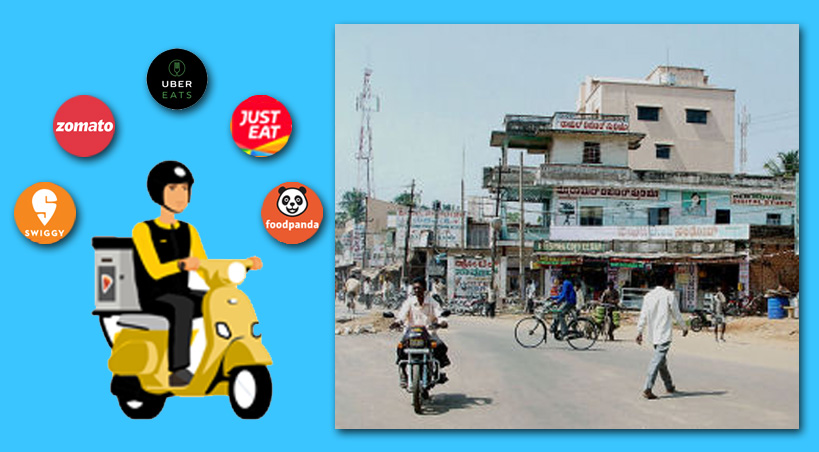What is Outdoor Advertising

Outdoor Advertising Methods, Tactics, and Tips
As a consumer, you will see outdoor advertising almost every day, although these days, it is harder and harder to actually grab the attention of the average customer. It is said that we see hundreds of outdoor advertisements every day, more if living in a city like New York or Chicago. But, recall of those ads is almost zero. So, doing it the right way it imperative, or it is simply a waste.
Also known as out-of-home (OOH) advertising, outdoor advertising is a broad term that describes any type of advertising that reaches the consumer when he or she is outside of the home.
It really is that simple. It can be segregated into smaller segments (explained below) but when it comes down to it, if it’s outside of the home, it’s outdoor advertising.
Outdoor advertising is considered a mass-market medium, just like broadcast, radio, TV, and cinema advertising. For this reason, it is better utilized for broad messages, branding and support campaigns.
If you are looking to do an outdoor ad, whether as an agency or for your own brand, remember that it cannot do the heavy lifting. Any attempts to do so will usually lead to a very cluttered and confusing message, and with so little time to take in the ad, it will be wasted money. Once you start putting more than 10 words of copy on a billboard, for example, you are asking an awful lot of the consumer. Many are driving past at high speed. Many more have their head in a smartphone. So, you have to choose wisely, and also take into account the digital me that can pair with the outdoor message.
Types of Outdoor Advertising
Perhaps the biggest goal of any young agency creative is to see their work posted around the streets of the country they work in. And one of the most common ways to achieve that is through outdoor advertising. Outdoor is a staple of the media mix, as it reaches hundreds of thousands of people, by foot, mass transit, or car, and is usually very quick and impactful.
The most common forms of outdoor advertising include:
- Billboard advertising
- Point of sale displays
- Street furniture (bus shelters, kiosks, telephone booths etc)
- Transit advertising and wraps (taxis, buses, subways, trains etc)
- Mobile billboards
- Guerrilla advertising (aka ambient media)
In the past, a billboard or outdoor ad was simply a way to do brand awareness. It is not possible to convey a complex message on a medium that people see for only a few seconds, or minutes at best, so it was seen as support for TV, direct mail, radio, and print. In short, keep the product or service top of mind, but let the other forms of advertising do the heavy lifting.
However, with the advent of mobile technology, and websites, outdoor can now drive people to something instantly. From QR codes, to simple web addresses, or even apps like Snapchat and Instagram, outdoor can be a way to begin a conversation with the consumer, or prompt an outdoor campaign to go viral.
Some outdoor advertising can become a focal point for an entire campaign, especially if it encompasses a stunt, or drives interaction with users and their cell phones. Recent examples include the TNT “Push To Add Drama” stunt, the tailgating ads for the Colorado State Patrol, and the Pepsi Max Unbelievable bus shelter.
Costs Associated With Outdoor Advertising
As with other forms of mass-market communication, reaching hundreds of thousands of consumers is not cheap. And as competition for billboard spaces increases, so do the associated costs.
To understand the costs involved, it’s important to know how they’re calculated. It’s based on a system called Gross Ratings Points (GRP), which refers to impressions that are delivered by a media schedule for the outdoor location. This is called the DEC, or Daily Effective Circulation, and is also known as a “showing.” One rating point is equal to 1% of the market population.
There are many factors involved in this, which is based on traffic, visibility, location, size and so on. This rating gives you a showing score of anything from 1% to 100%. 50% means that at least 50% of the population in the area would see one of your boards at least once a day.
You can expect to pay tens of thousands of dollars for a 50 showing for one month. In a major area like New York, Chicago or Los Angeles, expect the price to skyrocket. You really do get what you pay for.
Tips for Successful Outdoor Advertising Campaigns
To ensure you are getting the best bang for your buck, you need to approach your outdoor strategy with careful planning and precision. We live in a world that is ruled by the smart phone, and other portable devices. The attention of the average consumer is drawn into a small screen in front of them, not billboards and transit wraps. So, to break into that valuable attention span, follow this advice:
- Make your outdoor tactics shareable
What is remarkable about the outdoor ideas you want to do? Are they inventive? Do they have 3D parts or human interaction? Do they make a statement or shock people? You want to approach the outdoor you do as something that will cause a stir; enough that people will film it and share it on social media. If it doesn’t have that quality, it is not a good use of your time and money. - Spend money on high-traffic sites
You may be tempted to get cheaper units, and more of them. This is a waste of money. The key to success is getting as many eyeballs on your outdoor campaign as possible. It’s far better to do one site that will get a million views, than five sites that will get 800,000. - Look at the competition
Perhaps the best example of this comes from a billboard by Audi. It simply said “your move BMW.” A week later, BMW put a billboard up across from it that said “Checkmate.” You do not want to leave yourself open to ridicule, or look like you’re tone deaf. So, study the area, and select sites that will not pose a problem. - Less is more
Outdoor is looked at for a second or two, if you’re lucky. You do not want to saturate the ad with messages and calls to action. Keep it simple, and let the few words and stunning visuals grab the attention. Think of outdoor as a conversation starter only. It is not there to inform, but merely to intrigue.



